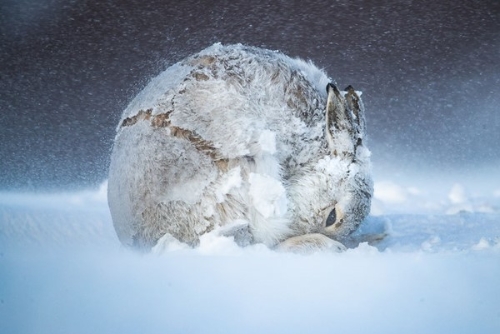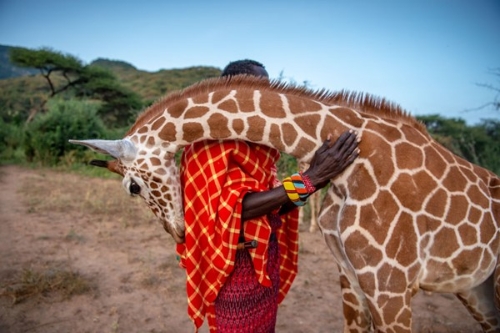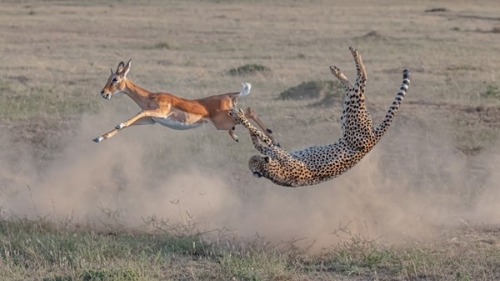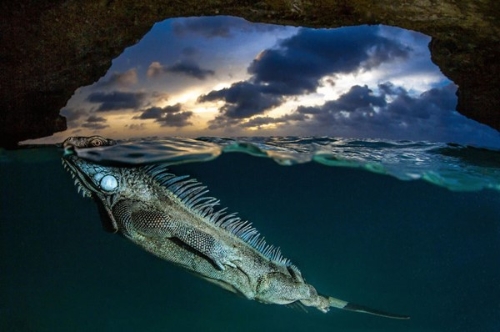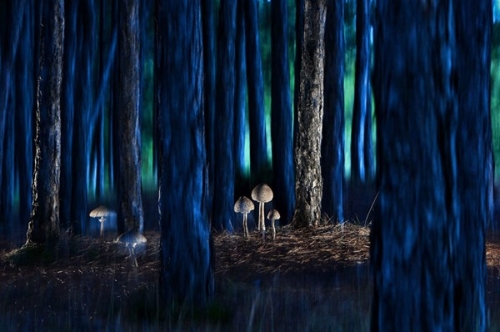The best photography works of the big picture natural world photography competition in 2020
Colorful animals on the earth.
When the California Academy of Sciences announced their 2020 BigPicture Natural World Photography competition, they asked the photographers to send their work that "will both celebrate and illustrate the rich diversity of life on Earth and inspire action to protect and conserve it through the power of imagery." Now that the contest is over and the results have been announced, it's safe to say that the call was answered.
These best images originally appeared on bioGraphic, an online magazine about science and sustainability and the official media sponsor for the competition, with captions written by the bioGraphic staff.
Grand Prize: 'Hare Ball' By Andy Parkinson
"To get this intimate shot of a mountain hare (Lepus timidus) curled up against a Scottish winter storm, Andy Parkinson endured weeks of ferocious cold and wind that drove shards of ice into his face. Britain’s only native rabbit species, on the other hand, is utterly at home in these inhospitable conditions. Groups of twenty or more hares gather each winter to nibble heather on leeward slopes, where the snow tends to be shallower. Before resting, they jump away from their tracks to confuse predators. And while some ride out storms in burrows or depressions, this female created her own shelter, tucking herself into a ball to conserve heat and minimize exposure to the elements. It’s a nifty strategy for surviving the kind of weather that drives most creatures indoors or underground.
Despite their fortitude, mountain hares are Britain’s fastest-declining mammal, due to unregulated hunting and habitat loss. Parkinson hopes that calling attention to these remarkable rabbits will convince legislators to protect them."
Photo Story: Coexistence, Winner: 'Guardian Warriors' By Ami Vitale
"Too often, says Ami Vitale, nature photography excludes the humans whose lives are intertwined with the natural world. Her decade-long project documenting the bonds between Samburu people and wildlife in northern Kenya reverses this oversight, telling the story of how Samburu people became advocates for wild animals and their habitat.
For as long as Samburu people have grazed livestock, their livelihood has been seemingly at odds with the elephants, rhinos, giraffes, and other large mammals with whom they share their homeland. But as poachers decimated elephant (Mammalia proboscidea) populations in recent decades, Samburu herders realized their cattle were also suffering. Elephants promote grass growth by clearing brush and small trees, so as their numbers shrink, there’s less grass for cows to graze on. In response, the Samburu launched a sanctuary to rehabilitate orphaned elephants, along with other conservation programs that benefit threatened species like the reticulated giraffe (Giraffa camelopardalis reticulata), shown here. These efforts are changing long-standing Samburu attitudes toward wildlife, and show how the health of human and animal communities are connected. “Indigenous communities hold the key to saving Africa’s great animals,” says Vitale. “Where these communities are intact, poaching has dramatically decreased.”"
Terrestrial Wildlife, Winner: 'Cheetah Hunting In Maasai Mara' By Yi Liu
"Although they’re the fastest land animals in the world, catching prey is no easy feat for a cheetah (Acinonyx jubatus). The mostly treeless terrain of the African savanna gives antelopes, impalas, and other ungulates ample time to spot approaching predators, and even a slight head start can be the difference between life and death. To avoid alerting their prey, cheetahs start out hunting low to the ground, where their spotted coat helps them blend into the terrain. When they get within 60 meters (200 feet) of their target, cheetahs accelerate at a blistering pace, reaching 95 kilometers (60 miles) per hour in a matter of seconds. But the feline predators still have to account for the speed of their prey—in this case an impala (Aepyceros melampus), which can zig-zag at upwards of 80 kilometers (50 miles) per hour. To close the gap, this cheetah tripped its quarry as it attempted to escape, proving that sometimes, strategy is just as important as speed."
Aquatic Life, Finalist: 'The Green Iguana' By Lorenzo Mittiga
"There I was, fully equipped with my camera, its underwater housing, and a wide-angle lens, preparing for the final setting of the sun, when a friend interrupted my solitude," writes Mittiga, a member of our Your Shot community. “He had dived into the water above my head and was swimming around the entrance of the cave, as if to say 'hello' to me.”
Landscapes, Waterscapes, And Flora, Finalist: 'Rain’s Visitors At Dusk' By Agorastos Papatsanis
"Despite the ethereal appearance of this photo, these edible mushrooms (Macrolepiota procera) won’t induce any hallucinations. But that doesn’t mean they aren’t magical. Indeed, the more we learn about mushrooms, the more magic they seem to harbor. From helping trees communicate to producing cancer-fighting metabolites, scientists have only begun to uncover the fantastic features of fungi.
At the root of many of these capabilities is the unique role that mushrooms play in the environment. As primary decomposers, mushrooms break down the organic matter of dead plants and animals. In return, the fungi become flush with essential nutrients and minerals, a number of which can confer antioxidant, antimicrobial, and anticancer benefits to humans. This same ability also makes mushrooms exceptional environmental remediators, ingesting the toxins and heavy metals that various industrial practices have leached into the soil."
